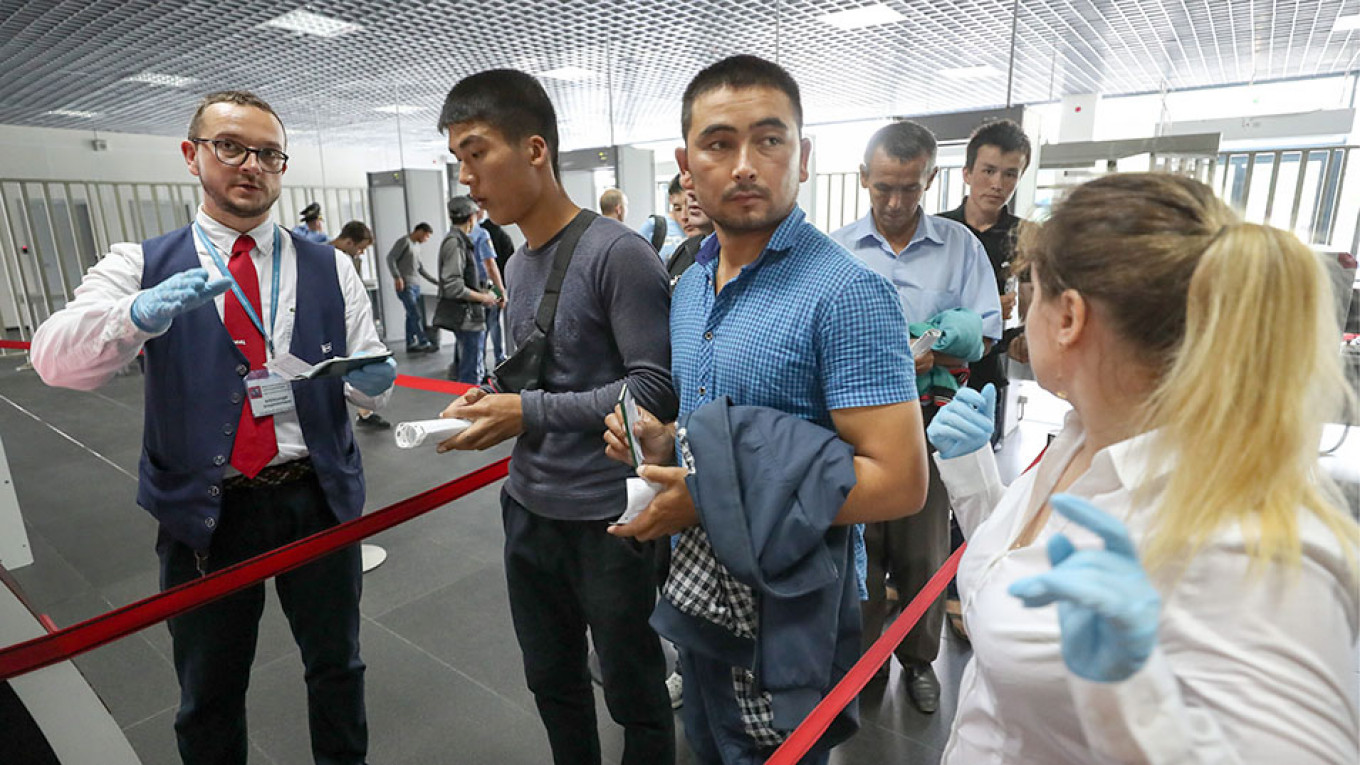
Russia’s Federal Security Service (FSB) has for the first time in two decades released data on the number of labor migrants who have arrived so far in 2019, revealing the extent of work-related migration into the country.
President Vladimir Putin aims to offset Russia’s declining population numbers with measures that include attracting up to 10 million Russian-speaking migrants in the coming years. Researchers recently said that migrant arrivals to Russia reached decade-high levels in January-April 2019 following record lows in 2018.
The FSB border service data says that 2.4 million migrants have arrived in Russia for work between January and June 2019, according to a tally by the RBC news website.
At 918,000 people, Uzbekistan contributed the majority of labor migrants to Russia, followed by 524,000 from Tajikistan, 265,000 from Kyrgyzstan, 165,000 from Ukraine and 105,000 from Kazakhstan.
Numbers of labor migrants from countries outside the post-Soviet space were significantly smaller, with 50,300 from China, 10,800 from Germany and 10,200 from Turkey.
Only 4,300 British and 3,700 U.S. citizens traveled to Russia this year with the intent to work, according to the reported figures.
Data for overall migration in January-June 2019 says that more than 15 million foreigners have crossed the Russian border as tourists, businesspeople, workers, students or for other purposes.
The FSB data is “highly vulnerable” to overestimating labor migration figures because it could count a single migrant’s multiple trips as several people, RBC quoted Moscow State University’s top researcher for population and demography economics, Olga Chudinovskikh, as saying.
The FSB’s border service estimated that 32.6 million foreigners traveled to Russia last year, more than six times the 4.9 million foreigners registered by Russia’s statistics agency.
